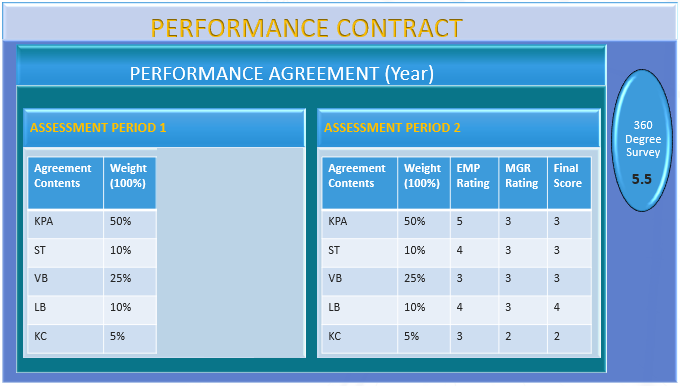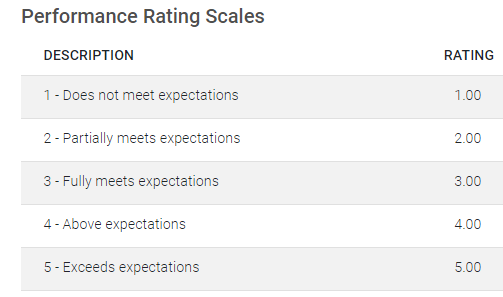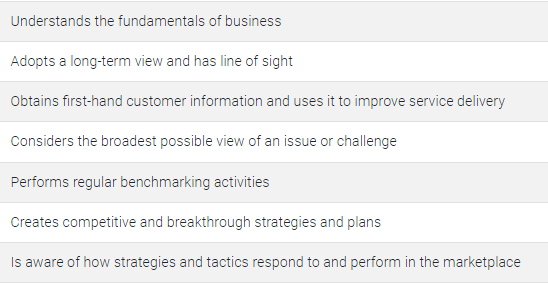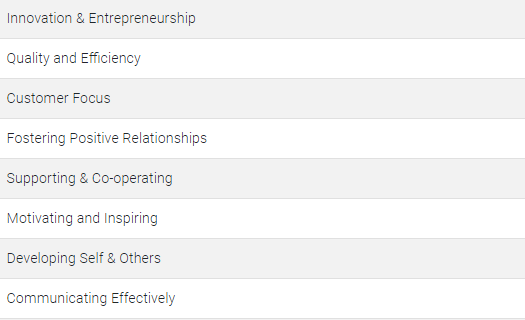Glossary
The Signify performance management module allows the use of field aliases, meaning you can rename certain system objects to match the terminology used in your company. Find here a list of standard terminology and the meaning Signify attaches to each.
Contract, Performance Agreement and Assessment/Review Period
The best way to explain the Signify definition of the three interconnected concepts of
- Contract,
- Performance Agreement, and
- Assessment Period (also called a review period),
is by referring to the following diagram.
There are one or more assessment periods (also called review periods) in a performance agreement. An employee's performance agreement contains his/her objectives. If other components (e.g. a 360 degree survey) are added to the employee's performance agreement, we refer to the combination as a performance contract. Thus, when referring to a performance contract it implies the performance agreement, but the performance agreement does not include the additional components - it only refers to the performance objectives.
Performance Year / Cycle
A performance year, or cycle, usually lasts for 12 months. A company's performance cycle could e.g. run from January up to December, or from July to June of the next year. One of the considerations in deciding your performance cycle might be to synchronise it with your salary increases negotiations.
Assessment Frequency
A performance year is usually divided into one or more time periods - called review or assessment periods. The number of assessment periods in a performance year is called the assessment frequency. See below for the most used assessment frequencies.
- Annual (there will be 1 review or assessment, 12 months in duration)
- Bi-annual (2 reviews, usually 6 months each)
- Quarterly (4 reviews, usually 3 months in each)
Review Survey
A performance agreement is used to set performance objectives for a period. Occasionally companies combine a performance agreement with a review survey, also called a 360 degree evaluation, in which more general, company-related behaviours are measured.
Contract Phase Statuses
A performance contract follows a process as it goes between an employee and a manager for submission, approval etc. See below the main contract phases you can expect to see on reports and the Performance Management Dashboard.
| CONTRACT PHASE | CONTRACT STATUS | MEANING TO THE EMPLOYEE |
| Contract | Performance Agreement Allocated | A performance agreement was created for the employee but no objectives were loaded yet. |
|
Objective Setting
(for each review period in the agreement) |
Objective Setting Started | Some objectives were loaded, either by the employee or the manager. |
| Objective Setting Completed - Employee | Objectives were loaded and the employee submitted the agreement. | |
| Objective Setting Completed - Manager |
The manager considered the submitted objectives, may have had a discussion with the employee, made changes to the objectives as needed and approved the agreement. The rating fields for employee and manager are now available. |
|
|
Review
(for each review period in the agreement) |
Review Started | The agreement was opened in the review phase, but the employee or manager ratings were not submitted yet. |
| Review Completed - Employee | The employee completed his/her self-review and submitted the rated agreement to the manager. | |
| Review Completed - Manager | The manager completed their personal rating of the employee's objectives, considered the employee's self-rated objectives, may have had a discussion with the employee, provided the final objective scores and approved the rated agreement. | |
| Review Survey | Review Survey | If part of the contract, the Review Survey Score is provided, usually by the Performance Administrator. |
| Contract | Finalised | The agreement and the review survey parts of the contracts have been completed and submitted or approved by manager and employee. |
Objective
An objective is a goal to be achieved. In Signify a KPA's KPI, a Stretch Target KPI, a Company Value, a Leadership Behaviour and a Key Competency are all called objectives, or goals, which an employee should achieve during the course of a performance year, and against which the employee will be measured .
Objective Setting (Phase)
In the beginning of a performance year, for a certain time period, the employee and their manager will engage to determine what the appropriate objectives will be for the employee's performance agreement. That is, what performance goals are set for the employee. This is called the objective setting phase of a performance agreement.
Rating (Phase)
Towards the end of an assessment (or review) period in a performance year, the employee and their manager will engage to discuss the employee's self-review ratings, the manager's personal review ratings of the employee's performance, and then discuss the final ratings for each objective. This is called the rating phase of a performance agreement.
Section Weight
A performance agreement consists of one to 5 different sections: Key Performance Areas, Stretch Targets, Company Values, Leadership Behaviours and Key Competencies. Each of these carry a weight to indicate its relative importance to the agreement. In the image below the Key Performance Area's section weight is 50%. Simply put, if you get an average score of 4 (out of 5) for the KPA section, its contribution to your overall agreement score will be 50% x 4 = 2.
See below typical section weights for an agreement. Note that section weights must always add up to 100%.
| SECTION | TYPICAL SECTION WEIGHT |
| Key Performance Areas | 70% |
| Stretch Targets | 10% |
| Company Values | 5% |
| Leadership Behaviours | 5% |
| Key Competencies | 10% |
| TOTAL | 100% |
Rating / Rating Scale / Score
In the beginning of a performance year, a manager and employee discuss the employee's objectives for the year ahead. At the end of each review or assessment period (of which there could be 1 or more in a year) there follows a review. During the review the employee provides a personal rating or score for each of his/her objectives. This is only seen by the manager once the employee submits his/her ratings. The manager also provides a personal rating for each of the employee's objectives - also not immediately seen by the employee. Each section could potentially have its own rating scale, but usually they are kept the same. See below for an example of a typical rating scale.
During a joint discussion the manager and employee talk about their personal ratings, and especially any rating discrepancies. The manager provides a final rating or score for each objective and this becomes the final rating for the employee's review period.
Personal Development Plan (PDP)
Perspective / Pillar
Perspectives are categories used to group KPAs together and has its origin in the Balanced Scorecard approach to performance management. Typical examples of perspectives are:
- Financial perspective
- Customer perspective
- Internal process perspective
- Learning & growth perspective
If the system is configured as such, a user must select a perspective before any KPAs can be added. The perspective categorisation can be disabled by a setting which means only KPAs and KPIs are then required in the Key Performance Area and Stretch Targets sections. Some people prefer to use the word 'pillars'.
Key Performance Area (KPA)
Key Performance Areas refer to the areas within the business for which a person is responsible e.g. Process Improvement, Safety and Health, Security, etc. A KPA is further defined by one or more Key Performance Indicators (KPI). Refer to Key Performance Indicators for further examples.
Key Performance Indicators (KPI)
A Key Performance Indicator is a type of performance measurement that acts as a compass, helping you understand how you are performing towards strategic goals or objectives. To be effective, a KPI must be well-defined, quantifiable and be crucial to achieving your goal. See below for examples of how a KPI can further define a KPA.
|
KEY PERFORMANCE AREA (Area of work) |
KEY PERFORMANCE INDICATOR (Outcome/impact to be achieved) |
|
Customer complaints |
Reduction in time response to resolve complaints, per quarter |
|
Cost effective procurement |
Reduction on cost spend on items sourced per supplier, per year |
Measures
Key Competencies
Competencies can be used in an appraisal process to describe the major skills, abilities, and attributes that a staff member needs to be successful in a job and/or organization. (Penn Human Resources)
In the system, competencies can be defined for, and loaded against each job from where they become available in the Performance Management product.
Stretch Targets
A stretch target (also called a stretch goal) in the performance management product functions the same as a key performance areas objective, although the intention with a stretch target might be different. This section is called 'Stretch Targets', but, by making use of the system aliases, it can be renamed to anything else. One example is a company who renamed it to Personal Development Plan to create a space for their training initiatives on the employee's agreement.
Leadership Behaviours
Leadership behaviours are objectives in a performance agreement only applicable to employees in a leadership position, i.e. if the employee has other people reporting to him. Should an employee not be a manager, the section's weight will be distributed pro-rata among the remaining sections, and the section will become unavailable to the employee. See below for a few examples.
Company Values and Behaviours
Company values and behaviours are clear statements of how you expect people in your company to act. By identifying your values and behaviours, and making them explicit, you shape your company's culture. This is important because the company values and behaviours provide a moral compass for the employees, establish a basis for consistent decision making by everyone and can give some guidelines for internal processes. Company values and behaviours are used to measure an employee’s performance against the company’s internal values and will automatically form part of each employee's performance contract.
See below for typical examples.
Employee / User / Learner
In the system, we refer to system users, or just users, when we speak about people using the system in a non-administrative and non-managerial capacity. If the product under discussion leans towards the training suite, we may refer to users as learners. When a product clearly functions in a manager-subordinate environment (e.g. Performance Management) we prefer to talk about employees and their managers as that is usually the relationship. Please see employee, user and/or learner as interchangeable.
Manager / Performance Manager / Line Manager
A manager in the sense of the system is a person with other people reporting to him/her. Organisationally, a manager might be called a line manager. Considering the Performance Management product, your manager is your Performance Manager. Going towards the training suite, you may encounter a training manager. In respect of the products in the system, all these kinds of managers could be one and the same person, or completely different people. Please refer to a user/employee's Reporting Lines to see who are fulfilling each of these roles. Please see manager, performance manager and/or line manager as interchangeable.
Pre-moderation Rating / Final Rating
During the review discussion between a manager and employee, a final rating or score is determined by the manager and entered into the system. For the review period this is the final rating, but technically speaking any 'final rating' is subject to the company's moderation committee's decisions, and potentially amendments. Therefore we prefer to label the final rating in a review period as the pre-moderation rating, alerting users to the fact that this might not be the final final rating.
Moderation / Calibration
After completion of a full performance cycle's review periods, and the subsequent calculation of the final contract scores, these scores - and the employee contracts supporting them - are usually sent to a moderation committee, also called a calibration committee. They have the mandate to to ensure fairness across employees, managers, departments etc. and they may amend final scores.
Submit vs. Approve vs. Modify
When an employee is done loading agreement objectives, he/she needs to submit the objectives to their manager for consideration. Submit does not imply approval - only the manager can approve and employee's objectives. The manager considers, discusses and changes (if needed) the objectives and eventually approves the agreement. Should changes to an approved agreement be needed, the manager (first) and employee (second) must modify the agreement, opening it up for editing.
The same three actions are required when going through the agreement review process.
- Employee self-rates his/her objectives and submits the scores.
- Manager does a personal rating, then provides the final scores and approves the review period.
- Should a change be needed, both manager (first) and employee (second) have to modify the review before changes can be made.
Notes
An employee submitting objectives, or rated objectives does not imply the employee's approval of the objectives or their scores - it is only an acknowledgement of the fact that it is now on paper. The manager does the approval of the objectives, and their scores. In this sense the system is merely a paper copy of the physical performance management process followed by a company.
If an employee is unhappy with what is in the contract, a separate process is followed outside of the system, and as stipulated by the company's dispute resolution procedures.
Dual Approval
Dual approval refers primarily to two parties involved in a performance contract's acceptance - the employee and his/her manager. The employee is not expected to approve anything - he/she only submits the agreement, or the agreement scores for consideration by the manager. The manager approves - whether it be objectives, or scores.
If dual approval is not active, the manager can create and approve the contract without needing the acceptance of the employee.
Check-in





